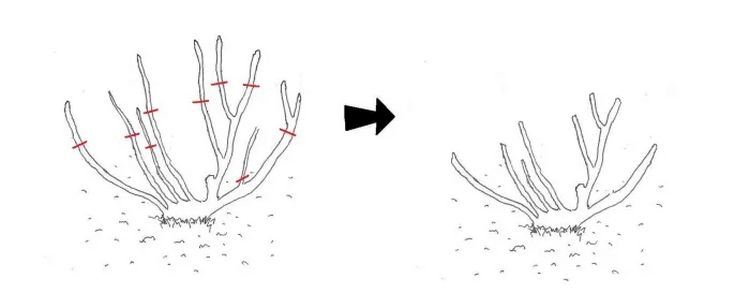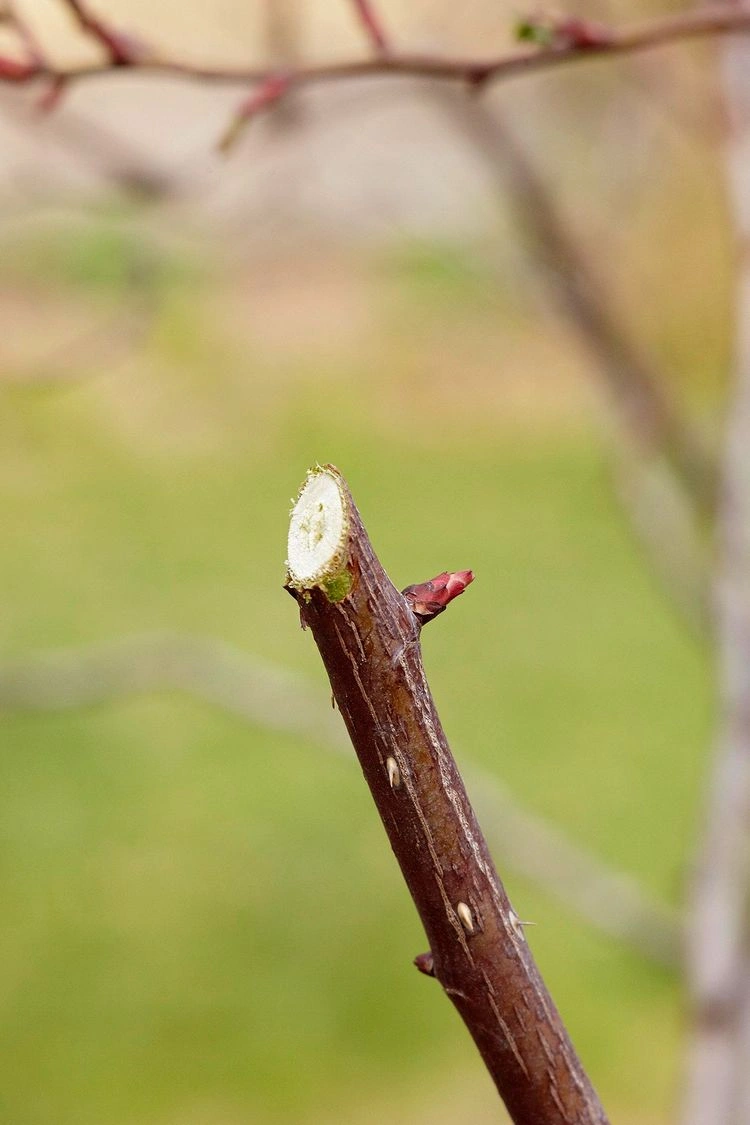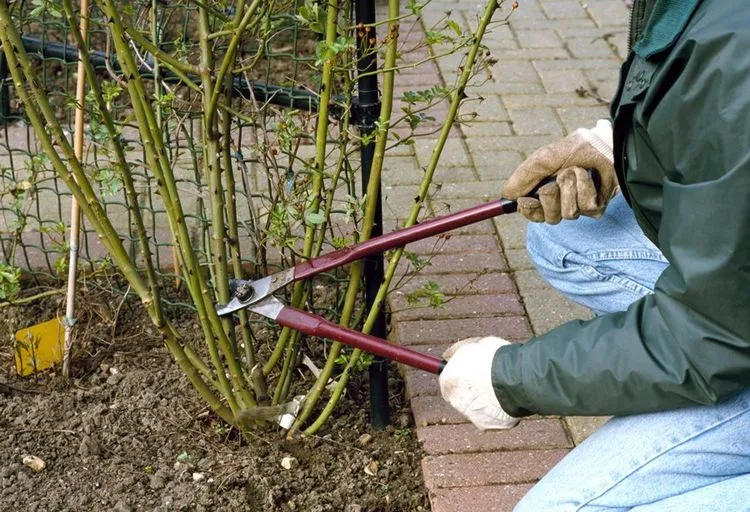When it comes to roses, pruning can be daunting for gardeners as it seems counterintuitive to snag back magnificent growth and it can be downright awkward when the plant gets out of hand. Yet pruning results in a healthy plant as it encourages new growth, removes old and decaying wood, contributes to the plant’s overall shape and reduces the likelihood of fungal disease by improving air circulation around the rose plant. Find out below how you should prune your roses in spring! We explain the most common pruning mistakes!
When should roses be pruned?
Before the first flowers appear, roses should be pruned back between the end of winter and the beginning of spring. When to prune depends on the type of rose plant as well as the hardiness zone it’s growing in. Keep an eye on the leaf buds that are developing on your rose plant. When they swell and turn pink or reddish in color, it’s time to prune them. Timing is important for a successful pruning, as this should be done either just before the buds open or immediately after the last severe frost in your area. However, some roses are picky about when to prune, preferring you to trim their shoots short before they wake up from their hibernation.
Cut roses in spring – avoid these mistakes

Don’t be put off by the fact that skillful pruning of roses takes time and effort – experienced gardeners find that hurting a rose bush is extremely difficult, and most mistakes quickly outgrow it. Also, it’s better to make mistakes when learning new skills than to allow your roses to become unmanageable and cause a big mess in your garden in the future.
You are not wearing proper protective clothing
Before you get started, make sure you’re wearing sturdy gardening gloves to protect your arms, canvas or denim pants, and a long-sleeved canvas shirt or jacket. Stings from rose thorns can lead to a number of different bacterial and fungal diseases, one of which is more commonly referred to as “rose disease.” Because of the frightening severity of these diseases, it is important to avoid injury from thorns as much as possible by wearing protective clothing.
The timing is poorly chosen
The day when it is coldest and wettest is ideal for pruning your roses, which involves making deep incisions in the bush. After making these deep cuts, all you have to do is tend the shrubs.
Pruning roses in spring with unsuitable tools
Never use anvil shears. Always cut with scissors that have a bypass.
Wrong stem size

Cut off the stem if it’s thinner than a pencil. The diameter of the subsequent growth at that point on the stem will be the same. Think about how tall you want the stem to be. A large bud requires sturdy stem support.
The scissors are held incorrectly
Bypass shears have two different sized blades, one very small and pointed, while the other is thick and curved. Place the thick blade against the part to be removed. The part of the shoots that she touches is bruised.
pruning in the wrong place
Cut about 3mm above where a leaf is attached. Leaving a longer piece of the stem will result in the stem dying down to the leaf (or lower).
Pruning roses in spring – the pruning was made at the wrong angle

Any angle close to 45 degrees is acceptable. A cut that is more slanted and has a narrower angle is bad. A completely horizontal cut is also acceptable. A slanting cut is believed to prevent rot caused by water standing on the cut surface.
Improper or lack of post-cut care
In most cases, post-treatment of the trunk is not necessary. If something goes wrong at the spot, the trunk should be cut back even further. If you cut an old stem at the bud base, the large node from which all other stems emerge, be sure to seal the cut. Never use emulsion paint, but you can use white glue.
No protection for the shrub after the necessary pruning

It is wrong to think that a shrub will not be affected by diseases. Whether or not there are leaves, the black spot fungus, which is the bane of rose growers, overwinters on the stems. Cover the plants after pruning to prevent further defoliation, especially if your neighbors’ roses are affected by black spot.
Pruning roses in spring – You have given the shrub too much food or too soon
In mid-February the roses are in the dormant phase (no growth). As soon as the soil temperatures rise in March, the rose plants have a need to “eat”. It is recommended to feed the roses moderately with a balanced rose fertilizer and to do another feeding after about four weeks. A plant that is overly stressed by its diet will lose its leaves.
